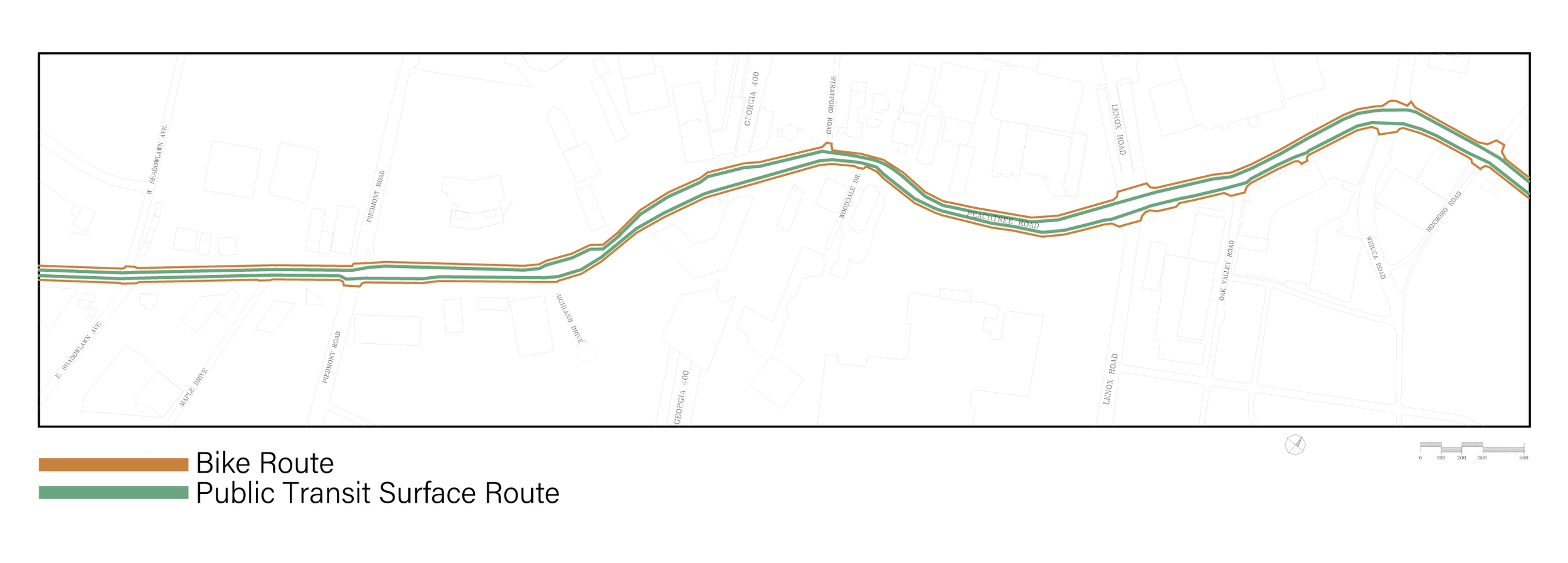The Blooming of Buckhead
/Completion of Phase One of the Peachtree Boulevard transformation, carried out as result of the efforts of the Buckhead Community Improvement District, was celebrated in October 2008 with a ribbon cutting by Mayor Shirley Franklin and other community officials. The Peachtree Road transformation is the major enhancement of a section of Peachtree Road in Buckhead into a more livable, walkable, bikeable and drivable avenue.
The new Peachtree “Boulevard” and some of the recent and in-progress new high rise office, retail, hotel and condo projects.
In the past twenty years the population of the Atlanta metropolitan area has doubled and the resultant increase in vehicular traffic has created problem spots around the city, on roadways that were never intended or designed to accommodate this increase in volume. As the traffic around the city grew, so too grew the market for high-end, high rise, in-town, multi-family residences, especially along the Buckhead corridor of Peachtree Road. While the increased population density in Buckhead reduced traffic elsewhere, it meant a more constant flow of traffic along Peachtree during the day, and at peak hours the volume became overwhelming.
The idea of developing the street into a destination, not just a thoroughfare, was originally envisioned by Sam Friedman, Chairman of the Buckhead Coalition. The Buckhead Coalition is a group formed by former Mayor Sam Massell and is made up of property owners and others interested in improving the urban development of Buckhead and the well-being of the area.
As a member of the Buckhead Coalition, architect George Heery, Brookwood’s Chairman, contributed preliminary ideas in the form of a study and design concepts for transforming the Peachtree Road corridor into a handsome and more convenient boulevard.
This conceptual design, which was based on Sam Friedman’s vision, covered the entire length of Peachtree within the greater Buckhead area, from the Peachtree Street overpass at I-85 at Brookwood Station running northward through the old original Buckhead area to the City Limits on the north.
Later a number of property owners who were associated with the Buckhead Coalition formed the Buckhead Community Improvement District with David Allman of Regent Partners as Chairman of the Board of BCID and with Scotty Green as BCID’s Executive Director.
Brookwood was subsequently retained by the Buckhead Community Improvement District to develop more details of a design for a portion of the Peachtree corridor from just south of the Peachtree-Piedmont intersection to a point north of Phipps Plaza.
Architect Laura Heery, then a member of the Brookwood management team, with her father, George and other members of the Brookwood firm, developed the original concept for the new Peachtree Boulevard. In the development of the concept Laura Heery and the Brookwood team worked closely with David Allman and Scotty Green, both of whom continue to provide guidance and leadership to the BCID and other developments of the Buckhead area.
In the mid 1990s, Brookwood, as both designer and development manager (with George and Shepherd Heery as development principals), broke ground on the highest quality high-rise multi-family project built to date in Atlanta, The Wakefield. The Wakefield is a luxury cooperative located on the Northwest corner of Peachtree Road and West Wesley Road, NW. The building permit for The Wakefield was the first private sector high rise building permit issued within the City of Atlanta in over two years at the time it was issued and the building was sold out shortly after its completion.
It is evident today to those in the real estate development field that The Wakefield set in motion the raising of design and construction quality standards of mid to high rise multi-family housing projects. The Wakefield also sparked the acceptance in the Atlanta market of the idea that very high quality homes could be located in high rise structures with settings that allowed easier access to work, shopping, places of worship and community activities.




